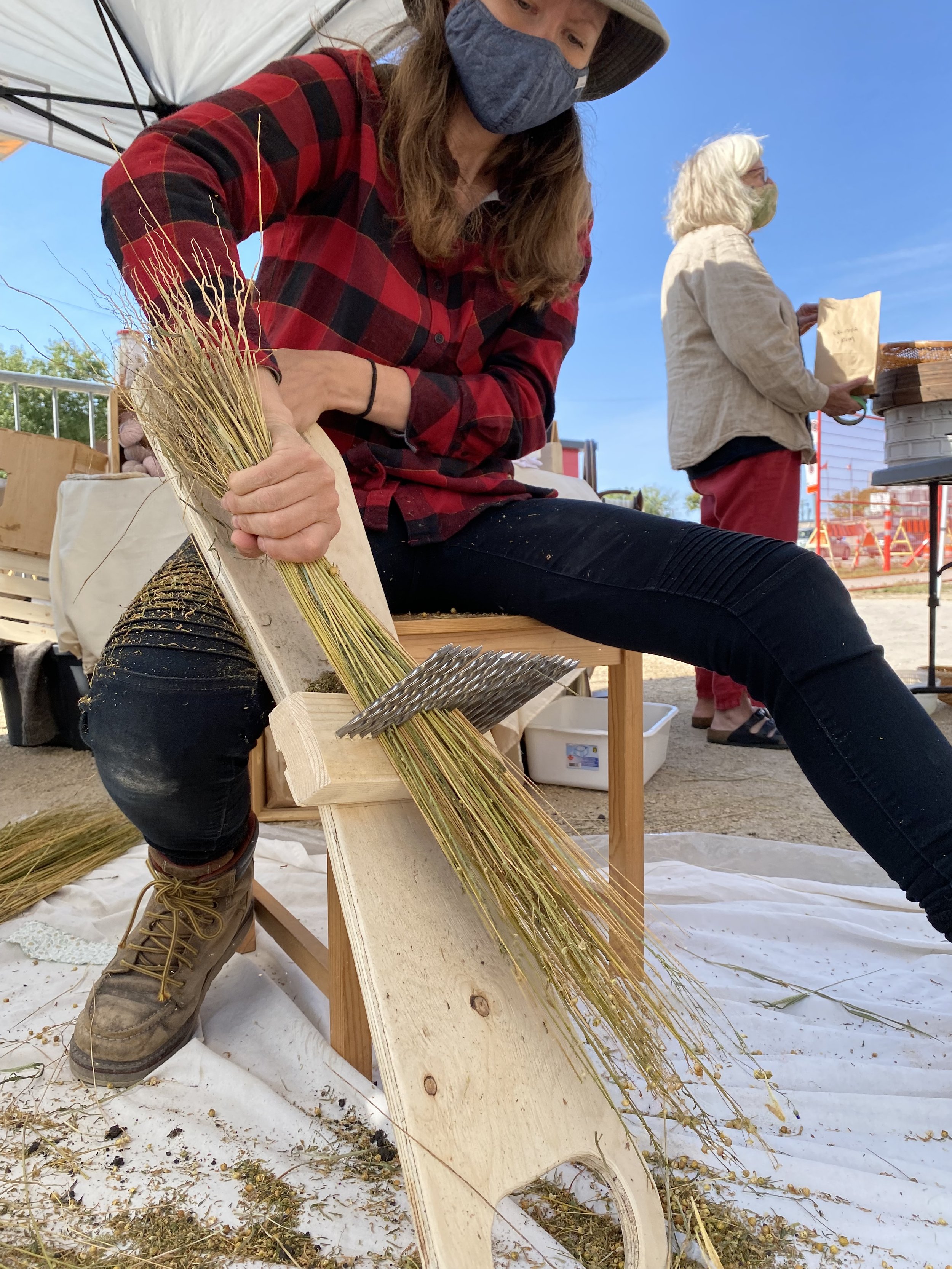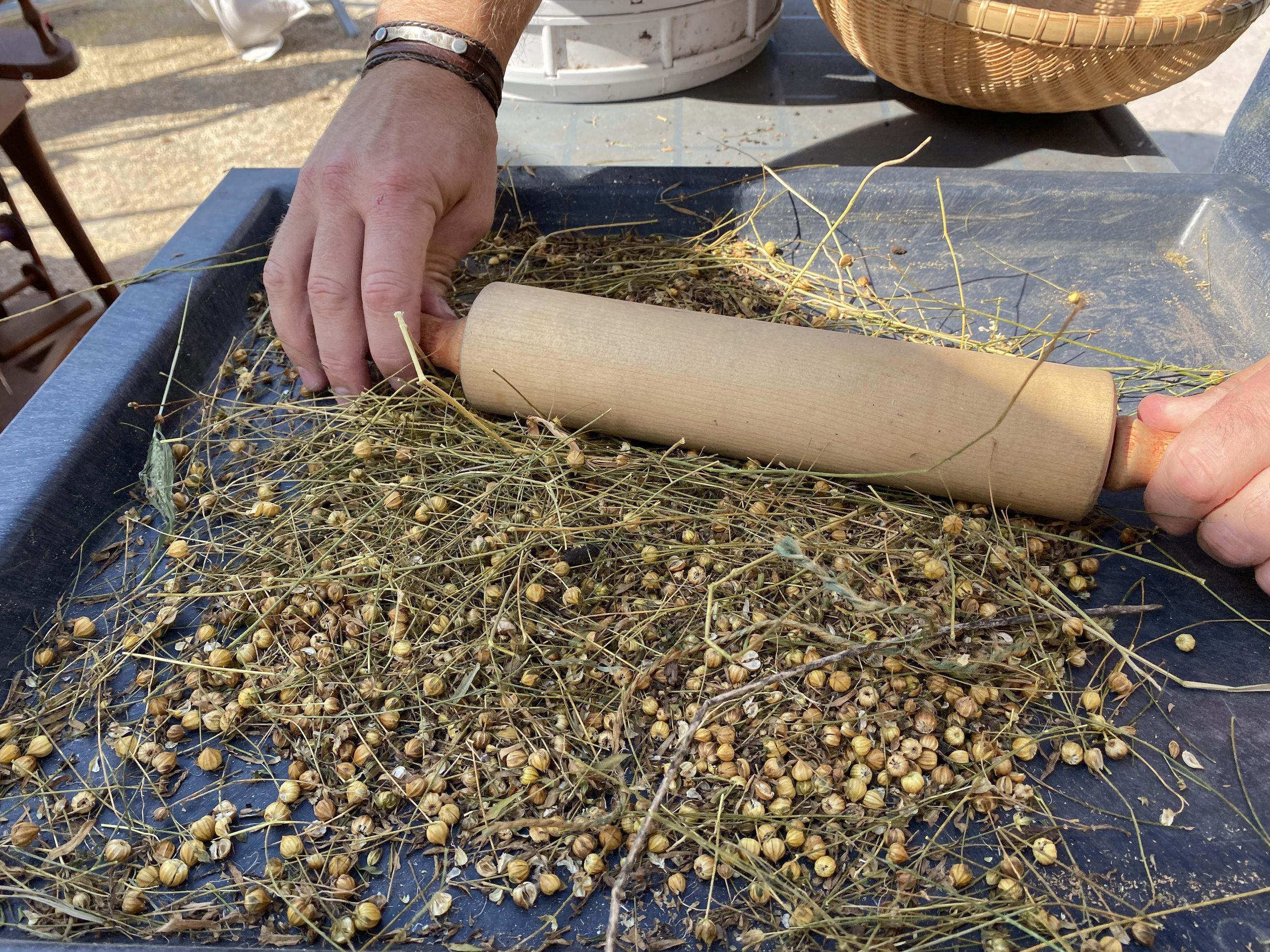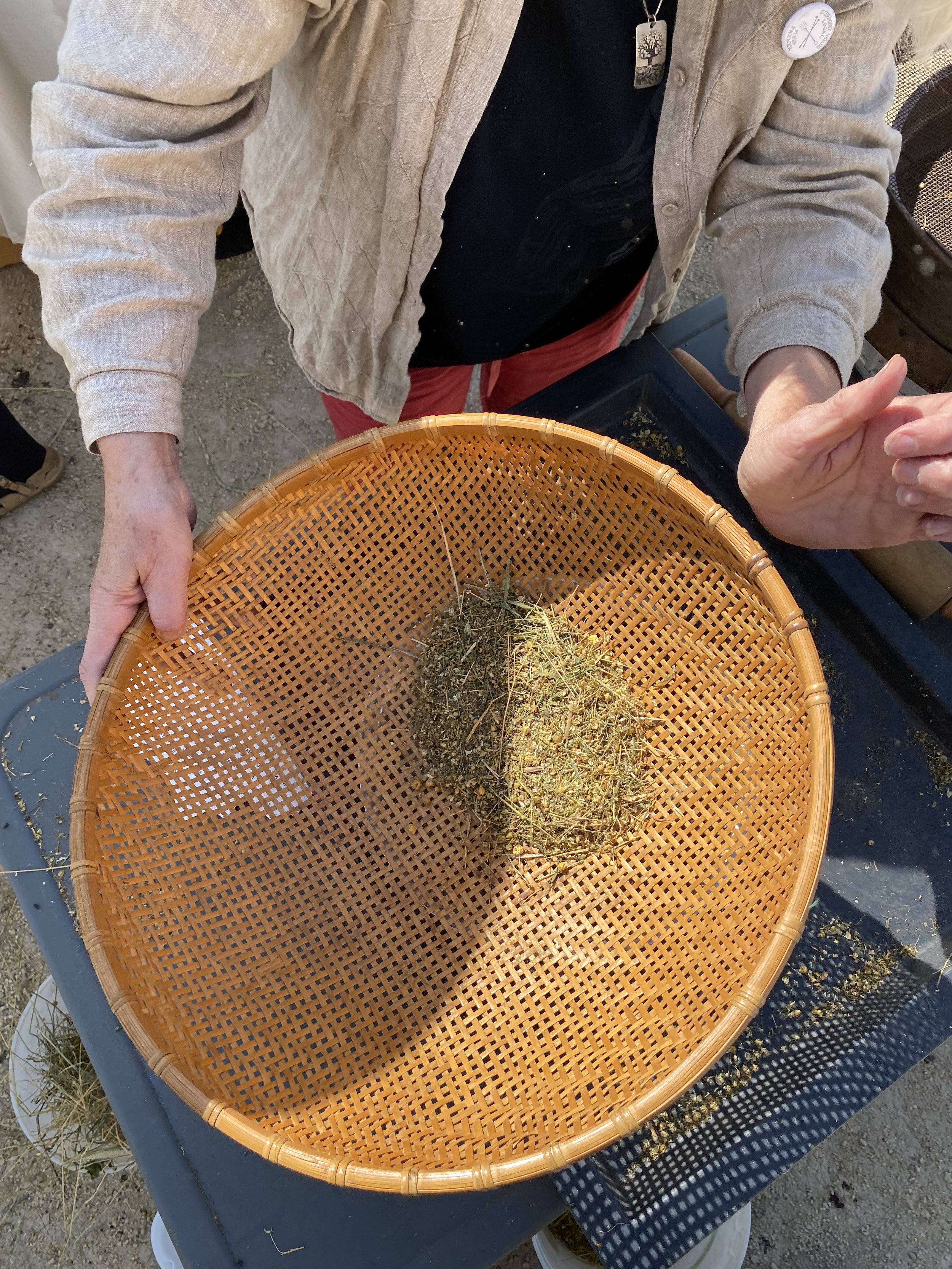Harvesting, Rippling & Retting Flax
Now that you have grown your flax you are ready to harvest and start the steps for processing it into linen. Here is a few helpful hints and videos from our flax-to-linen project.
Harvesting and Drying Flax Tips and Tricks
Harvest plants 30 days after flowering, in a window between 80-100 days after planting.
Stalks should be yellow 2/3 up, seeds will be pale brown.
Pull plants as soon as ready, keeping the roots intact.
Bundle into sheaves 18-20” in circumference and stand in groupings to dry. Flax should be dry in a week of dry weather. If heavy rain is called for, bring into garage or shed, or cover so sheaves don't get too wet.
Check out these videos made by Hundredfold Farm on harvesting your flax.
Rippling Flax seed heads Tips and tricks
RIPPLING: The process of removing seed heads from the flax plant.
Ensure the plants have been allowed to fully dry
Gather a handful of plants together with the seed heads at one end and draw them through a large coarse comb several times to remove the seed pods. A wooden or metal comb with a single row of teeth made from nails works well.
Gather the pods on a sheet and store in a dry area or container.
If you want to save the seed for next year’s crop, the pods are crushed and winnowed to remove the outside shell and chaff, leaving the seed behind.
Crush the seeds with a rolling pin on a pan and then use a basket to remove the shell and chaff and leave the seed behind.
REtting Flax Tips and tricks
RETTING: The process of detaching the fibres from the tissue around them using water to rot away the plant material.
Dew retting:
Lay the flax out on a mowed grass area. In order to achieve an even ret, the flax must either be laid so thin that the ground can still be seen, or if laid thicker must be turned from time to time.
Depending on the weather, this method will take two to three weeks. Warmer weather shortens the time, but if its too dry, the flax must be sprinkled with water to encourage decomposition.
Dew-retted fibres are typically of poorer quality and more darkly pigmented than water-retted fibres.
Water retting:
Completely immerse bundles of flax in water. A old tub, stock tank or pond will work great.
Ensure the flax is submerged and weighted down as retting produces gasses that force the plants toward the surface. Rocks, bricks or cement blocks are ideal.
Depending on the temperature of the water, this method may only take 7-10 days on average.
When to stop retting:
Done correctly, the fibres should be easily extracted from the core. Retted too long, the fibres will be damaged and weakened, causing them to brake easily.
If dew retting, the colour of the stems will also turn a silvery gray.
If water retting, the stems will turn more blonde in colour.
To test the progress, take a piece of flax, dry it thoroughly, then break it and see if the fibers pull away easily from the plant material in the center.
Drying:
Drying stops the retting process.
Spread the flax out thinly in the sun and turn every day. If the weather is bad, it should be brought under roof or inside and not allowed to get wet.
After drying, the retted stalks should then be stored in a dry area to cure for several weeks before being broken. This further helps to release the fibres from the woody stalks.
We have some helpful videos for retting your flax made by Hundredfold Farm.







